Papers by Antonio Villalpando
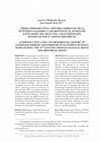
Revista de Historia de El Puerto, nº 72, 2024 (1º Semestre). 47-85. ISSN 1130-4340, 2024
Proponemos el estudio de los baldíos comunales, las dehesas y terrenos forestales como un caso p... more Proponemos el estudio de los baldíos comunales, las dehesas y terrenos forestales como un caso práctico para obtener información útil con la que poder reconstruir la Historia Ambiental.
Se pretende conseguir el objetivo de caracterizar el medio ambiente y la relación socioecológica existente en las zonas ganaderas y forestales del término municipal.
Se quiere caracterizar el tipo de ganado, su número, las características socioeconómicas de sus propietarios, las dehesas existentes, los conflictos sociales que padecían aspectos relevantes de historia ecológica, como el tipo de vegetación, la fauna y los ecosistemas dominantes. Queremos trazar su evolución a lo largo del siglo XIX y se propone identificar los principales antecedentes históricos. En relación a la Historia Natural y Ecohistoria, consideramos que este análisis mejora el conocimiento ambiental de los espacios naturales de El Puerto de Santa María, permitiendo trazar sus límites, especies y evolución. Los datos forestales son especialmente significativos.
CATnews. Cats Spetialist Group. (SSC) . IUCN., 2024
The aim of our paper is to explain lIberian Lynx population evolution. We also makes annalysis of... more The aim of our paper is to explain lIberian Lynx population evolution. We also makes annalysis of issues related with near extintion moments. Of course we tray to help biology of conservation to recover Iberian linx population looking for to increase the recovery of linxes territories where It have been settled decades ago.
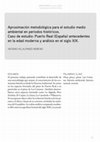
Matagorda, 2024
El presente trabajo pretende contribuir al desarrollo de
una metodología que mejore el conocimien... more El presente trabajo pretende contribuir al desarrollo de
una metodología que mejore el conocimiento de los ecosistemas históricos desde la Historia Ambiental. Se centra
en los espacios forestales del pinar de Puerto Real y en
particular en el pinar de Las Canteras. También desarrollamos otros espacios forestales como La Algaida, Pero
Esteban, El Carpio, La Zarza, La Carrahola o Villanueva.
Se incorporan datos sobre la evolución histórica de los pinares y la flora y fauna de su entorno, incluidas las marismas del Guadalete. Se realiza análisis comparado mediante SIG entre la superficie forestal del siglo XIX y la actual.
The purpose of this work is to contribute to the development of a methodology that improves knowledge of
historical ecosystems from Environmental History. It focuses on the pine forest areas of Puerto Real and in particular on the Las Canteras pine forest. We also focussed
on other forest spaces such as La Algaida, Pero Esteban,
El Carpio, La Zarza, La Carrahola or Villanueva. Data is
incorporated on the historical evolution of the pine forests and the flora and fauna of their surroundings, including the Guadalete marshes. We use Geographic Information Systems to compare the existing forest area in the19th century with the current forest area
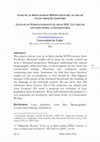
This paper is about Lynx sp. in Spain during XIXTh century from Ecohistoy. Historical studies abo... more This paper is about Lynx sp. in Spain during XIXTh century from Ecohistoy. Historical studies about fauna are usually carried out from a biological perspective. Biologists understand that ancient biogeography, behavioral data, or environments are key issues for conservation biology. Therefore, they conducted studies concerning past times. Sometimes we find that these historical studies are not as productive as they should be. This happens because of the nature of the historical documents, the meaning of the language or the historical context. We get more than 300 references about Lynxes. 254 of the references are related with Lynx locations. We made a proposal for evolution of Linx population from Ecohistory. Work with historical documents It´s very important for Ecohistory and future works of Conservation Biology.Este estudio es sobre Lynx sp. en España durante el siglo XIX desde el enfoque de la Ecohistoria. Los estudios históricos sobre fauna suelen ser realizados desde un enfoqu...
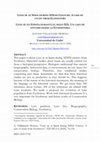
RIPARIA, 2020
Paper about Lynx sp. at Spain during the XIX th century. Here we give keywords to identify Linx ... more Paper about Lynx sp. at Spain during the XIX th century. Here we give keywords to identify Linx in old Spanish documents, even in American territory (Southern USA and México). We get hundreds of reports in documents such as old news papers, old Geographic studies and old dictionaries. Also old biological studies have been found that give us a strong data source. Relative human impact in historical wildlife can be found in old documents and other types of data, including the evolution of fashion, which is studied using old paintings. Of course there a study of bibliography. Data is always read into historical information.
Este artículo trata sobre linces, tanto ibericos como europeos, presentes en España durante el siglo XIX. Se propone altibajos en su abundancia, todos asociados a diferentes acontecimientos históricos. Se propone una metodología para la identificación de linces en antiguos documentos de territorios históricos hispanos, incluyendo Estados Unidos y México. Se usan gran cantidad de fuentes de información, tales como prensa histórica, estudios geográficos, premios por muertes de alimañas, antiguos estudios sobre zoología y biología. Se propone una evolución relativa de la población en base al impacto antrópico y el contexto histórico. En las fuentes destaca la evolución de la moda en el uso de pieles, analizada mediante obras de arte. Por supuesto hay un estudio de la bibliografía existente. Se concluye con mapas de distribución y tablas de datos y referencias en toda España.
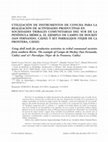
Zephyrvs, 2013
RESUMEN: La metodología de análisis funcional ha sido aplicada principalmente para el estudio de ... more RESUMEN: La metodología de análisis funcional ha sido aplicada principalmente para el estudio de instrumentos líticos, mientras que su utilización ha sido muy marginal para el estudio de los instrumentos de trabajo constituidos con materia de origen animal. Sin embargo, a través de la aplicación de esta metodología ha sido posible documentar diez instrumentos de concha en los yacimientos de Campo de Hockey y SET Parralejos, ocupaciones del IV-V milenio a. C. situadas en la banda atlántica de Cádiz. La interpretación de las huellas de uso desarrolladas en las superficies de estas conchas ha permitido establecer algunas hipótesis acerca de su participación activa en diferentes procesos productivos relacionados con el procesado de materias de origen animal y vegetal. Estos resultados han posibilitado establecer una relación entre el uso de estos instrumentos de concha y la eficacia de otros instrumentos empleados en las estrategias de subsistencia, contribuyendo a ampliar el conocimiento acerca de los medios de trabajo de estas sociedades tribales comunitarias.
Nature, 2006
The late survival of archaic hominin populations and their long contemporaneity with modern human... more The late survival of archaic hominin populations and their long contemporaneity with modern humans is now clear for southeast Asia. In Europe the extinction of the Neanderthals, firmly associated with Mousterian technology, has received much attention, and evidence of their survival after 35 kyr bp has recently been put in doubt. Here we present data, based on a high-resolution record of human occupation from Gorham's Cave, Gibraltar, that establish the survival of a population of Neanderthals to 28 kyr bp. These Neanderthals survived in the southernmost point of Europe, within a particular physiographic context, and are the last currently recorded anywhere. Our results show that the Neanderthals survived in isolated refuges well after the arrival of modern humans in Europe.
Avance de resultados de las excavaciones arqueológicas realizadas en la set Paralejos
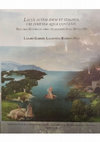
Lacus autem ides et stagnus, ubi inmensa aqua convenit., 2016
Investigación sobre la presencia de lagunas y humedales en el entorno del parque Natural Bahía de... more Investigación sobre la presencia de lagunas y humedales en el entorno del parque Natural Bahía de Cádiz durante los siglos XVII, XVIII y XIX. Se analiza el proceso de desecación de lagunas y los datos ambientales que aparecen en documentos históricos, incluido usos, fauna y flora.
Se analizan la laguna de Baineros, la Laguna de Morales y la Laguna de la Romera Sepultura, todas en término de Puerto Real. En la Laguna de Baineros, sita en La Algaida, se menciona su carácter estacional, la vegetación y el uso ganadero del espacio. La desecación parcial del humedal se justificó como interés para la salud, aunque estaba motivado con la privatización de parte de los bienes de propios, y la puesta en cultivo del espacio como pinar de pino piñonero. La actuación incorporó quejas de los ganaderos por la perdida de suelos y pastos comunales. Se realiza, en su conjunto, un aporte significativo a la Historia Ambiental y la Historia Natural de Cádiz.
En el estudio incorporamos el concepto "guerra al humedal", por la percepción negativa que imperaba en la sociedad y los numerosos expedientes de desecación que se justificaban como actuaciones de "interés público", esto desde la ilustración hasta el S. XX.
Isla del Trocadero: catálogo de recursos culturales en un espacio ambiental de primer orden
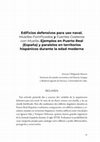
Revista Matagorda, 2020
A study about defensive architecture of moles and sea forts.
Nautical defensive buildings locate... more A study about defensive architecture of moles and sea forts.
Nautical defensive buildings located in Puerto Real (Spain) which are compared
with similar contemporary buildings located in Hispanic territories. Boths building are linked with Ignacio Sala and Próspero Verboom,
who where great Spanish Navy Enginiers at XVIIIth century. We evaluate
the possibility of creating new categories to catalog these buildings as fortified pier-mole and sea-fort with mole.
Estudio de arquitectura defensiva en muelles y fuertes costeros. Edificios para uso de la defensa naval localizados en Puerto Real (España). Se trata del muelle fortificado de la ciudad y el fuerte costero con muelle denominado castillo de San Luís del Trocadero. Ambos están relacionados con grandes ingenieros militares de la Ilustración como son Próspero Verboom e Ignacio Sala. En el análisis se comparan con fortificaciones en territorios hispánicos. Se considera necesario crear una categoría propia para este tipo de edificios para garantizar su protección.
Utilización de instrumentos de concha para la realización de actividades productivas en sociedades tribales comunitarias del sur de la Pensínula Ibérica. El ejemplo de Campo de Hockey (San Fernando, Cádiz) y Set Parralejos (Vejer de la Frontera, Cádiz)
Zephyrus, LXXII (2013), Jul 1, 2013
Riparia, 2020
This paper is about Lynx sp. in Spain during XIXTh century from Ecohistoy. Historical studies abo... more This paper is about Lynx sp. in Spain during XIXTh century from Ecohistoy. Historical studies about fauna are usually carried out from a biological perspective. Biologists understand that ancient biogeography, behavioral data, or environments are key issues for conservation biology. Therefore, they conducted studies concerning past times. Sometimes we find that these historical studies are not as productive as they should be. This happens because of the nature of the historical documents, the meaning of the language or the historical context. We get more than 300 references about Lynxes. 254 of the references are related with Lynx locations. We made a proposal for evolution of Linx population from Ecohistory. Work with historical documents It´s very important for Ecohistory and future works of Conservation Biology.
Nature, Jan 1, 2006
The late survival of archaic hominin populations and their long
contemporaneity with modern huma... more The late survival of archaic hominin populations and their long
contemporaneity with modern humans is now clear for southeast
Asia. In Europe the extinction of the Neanderthals, firmly associated with Mousterian technology, has received much attention, and evidence of their survival after 35 kyr BP has recently been put in doubt. Here we present data, based on a high-resolution record of human occupation from Gorham’s Cave, Gibraltar, that establish the survival of a population of Neanderthals to 28 kyr BP. These Neanderthals survived in the southernmost point of Europe, within a particular physiographic context, and are the last currently recorded anywhere. Our results show that the Neanderthals survived in isolated refuges well after the arrival of modern humans in Europe.
Late survival of Neanderthals at the southernmost extreme of Europe
Nature, Jan 1, 2006
Anuario Arqueológico Andalucía by Antonio Villalpando
Anuario Arqueológico Andalucía 2006
Gibraltar Caves Project by Antonio Villalpando
The excavations in Brays Cave, Gibraltar, have produced a Bronze Age burial. This has added to t... more The excavations in Brays Cave, Gibraltar, have produced a Bronze Age burial. This has added to the knowledge of the prehistoric occupation of the Rock of Gibraltar and becomes a regional reference for the study of funerary rituals of this period.
Books by Antonio Villalpando
Isla del Trocadero , 2017
Catálogo del patrimonio histórico de La Isla del Trocadero, en Puerto Real (España) . Destaca el ... more Catálogo del patrimonio histórico de La Isla del Trocadero, en Puerto Real (España) . Destaca el conjunto de instalaciones de historia marítima y patrimonio naval. Destacan las de Real Consulado de Cargadores de Indias, la Compañía de Filipinas y fuerte costero con muelle denominado Fort Louis del Trocadero o Castillo de San Luís del Trocadero. También diferentes instalaciones ligadas a la construcción y reparación naval. Está enfocado en la Historia Ambiental y el Patrimonio Histórico en espacios naturales protegidos.
Naval heritage, natural reserve, seaforts, sea archeology and sea history. Also international context for Casa de Contratación studies.
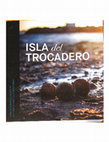
Isla del Trocadero. Catálogo de Recursos Culturales en un espacio ambiental de primer orden., 2017
Libro que relata la evolución de la Isla del Trocadero desde la perspectiva de la Historia Ambie... more Libro que relata la evolución de la Isla del Trocadero desde la perspectiva de la Historia Ambiental y los estudios de patrimonio en espacios naturales. Integra en conjunto un análisis de sus valores históricos, materiales e inmateriales, así como de los factores ambientales que le han merecido la categoría de Paraje Natural dentro del Parque Natural Bahía de Cádiz. Cada uno de los elementos materiales significativo es documentado en fichas, donde se relatan datos documentales, cartografía histórica y geolocalizaciones. Entre el patrimonio destacan las instalaciones náuticas ligadas a la Casa de Contratación, que integran edificaciones de uso naval que pertenecieron al Real Consulado de Cargadores de Indias, a la Real Compañía de la Habana, la Real Compañía de Filipinas , a la corona y a armadores particulares. También se analizan las fortificaciones, destacando el Castillo de San Luís del Trocadero (Fort Luys) y numerosas baterías napoleónicas. El espacio está unido a episodios bélicos como el Ataque Anglo-holandés de 1702, el sitio napoleónico a Cádiz o la Batalla del Trocadero.
Los textos son mayormente de A. Villalpando, salvo las Propuestas turísticas, capítulo de Víctor Álvarez Rodríguez. Se muestra distribución de los trabajos.
Book about Trocadero Island from the perspective of Environmental History and heritage studies in natural spaces. It integrates as a whole an analysis of its historical, material and immaterial values, as part of Bahía de Cádiz Natural Park. Each of the significant material elements is documented in files, where documentary data, historical cartography and geolocations are reported. Among the heritage, the nautical facilities linked to the Casa de Contratación stand out, which integrate buildings for naval use that belonged to the Royal Consulate of Shippers of the Indies, the Royal Company of Havana, the Royal Company of the Philippines, the crown of Spain and private shipowners. . The fortifications are also analyzed, highlighting the Castle of San Luis del Trocadero (Fort Luys) and numerous Napoleonic batteries. The space is linked to war episodes such as the Anglo-Dutch Attack of 1702, the Napoleonic siege of Cádiz or the Battle of Trocadero.
CATÁLOGO DEL PATRIMONIO HISTÓRICO DEL PARQUE METROPOLITANO DE LOS TORUÑOS Y PINAR DE LA ALGAIDA, 2009
Catálogo de sitios históricos y arqueológicos en un espacio natural. Contiene datos de bienes pat... more Catálogo de sitios históricos y arqueológicos en un espacio natural. Contiene datos de bienes patrimoniales en El Puerto de Santa María y Puerto
Real, en la bahía de Cádiz (España).
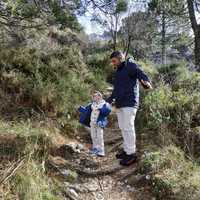










Uploads
Papers by Antonio Villalpando
Se pretende conseguir el objetivo de caracterizar el medio ambiente y la relación socioecológica existente en las zonas ganaderas y forestales del término municipal.
Se quiere caracterizar el tipo de ganado, su número, las características socioeconómicas de sus propietarios, las dehesas existentes, los conflictos sociales que padecían aspectos relevantes de historia ecológica, como el tipo de vegetación, la fauna y los ecosistemas dominantes. Queremos trazar su evolución a lo largo del siglo XIX y se propone identificar los principales antecedentes históricos. En relación a la Historia Natural y Ecohistoria, consideramos que este análisis mejora el conocimiento ambiental de los espacios naturales de El Puerto de Santa María, permitiendo trazar sus límites, especies y evolución. Los datos forestales son especialmente significativos.
una metodología que mejore el conocimiento de los ecosistemas históricos desde la Historia Ambiental. Se centra
en los espacios forestales del pinar de Puerto Real y en
particular en el pinar de Las Canteras. También desarrollamos otros espacios forestales como La Algaida, Pero
Esteban, El Carpio, La Zarza, La Carrahola o Villanueva.
Se incorporan datos sobre la evolución histórica de los pinares y la flora y fauna de su entorno, incluidas las marismas del Guadalete. Se realiza análisis comparado mediante SIG entre la superficie forestal del siglo XIX y la actual.
The purpose of this work is to contribute to the development of a methodology that improves knowledge of
historical ecosystems from Environmental History. It focuses on the pine forest areas of Puerto Real and in particular on the Las Canteras pine forest. We also focussed
on other forest spaces such as La Algaida, Pero Esteban,
El Carpio, La Zarza, La Carrahola or Villanueva. Data is
incorporated on the historical evolution of the pine forests and the flora and fauna of their surroundings, including the Guadalete marshes. We use Geographic Information Systems to compare the existing forest area in the19th century with the current forest area
Este artículo trata sobre linces, tanto ibericos como europeos, presentes en España durante el siglo XIX. Se propone altibajos en su abundancia, todos asociados a diferentes acontecimientos históricos. Se propone una metodología para la identificación de linces en antiguos documentos de territorios históricos hispanos, incluyendo Estados Unidos y México. Se usan gran cantidad de fuentes de información, tales como prensa histórica, estudios geográficos, premios por muertes de alimañas, antiguos estudios sobre zoología y biología. Se propone una evolución relativa de la población en base al impacto antrópico y el contexto histórico. En las fuentes destaca la evolución de la moda en el uso de pieles, analizada mediante obras de arte. Por supuesto hay un estudio de la bibliografía existente. Se concluye con mapas de distribución y tablas de datos y referencias en toda España.
Se analizan la laguna de Baineros, la Laguna de Morales y la Laguna de la Romera Sepultura, todas en término de Puerto Real. En la Laguna de Baineros, sita en La Algaida, se menciona su carácter estacional, la vegetación y el uso ganadero del espacio. La desecación parcial del humedal se justificó como interés para la salud, aunque estaba motivado con la privatización de parte de los bienes de propios, y la puesta en cultivo del espacio como pinar de pino piñonero. La actuación incorporó quejas de los ganaderos por la perdida de suelos y pastos comunales. Se realiza, en su conjunto, un aporte significativo a la Historia Ambiental y la Historia Natural de Cádiz.
En el estudio incorporamos el concepto "guerra al humedal", por la percepción negativa que imperaba en la sociedad y los numerosos expedientes de desecación que se justificaban como actuaciones de "interés público", esto desde la ilustración hasta el S. XX.
Nautical defensive buildings located in Puerto Real (Spain) which are compared
with similar contemporary buildings located in Hispanic territories. Boths building are linked with Ignacio Sala and Próspero Verboom,
who where great Spanish Navy Enginiers at XVIIIth century. We evaluate
the possibility of creating new categories to catalog these buildings as fortified pier-mole and sea-fort with mole.
Estudio de arquitectura defensiva en muelles y fuertes costeros. Edificios para uso de la defensa naval localizados en Puerto Real (España). Se trata del muelle fortificado de la ciudad y el fuerte costero con muelle denominado castillo de San Luís del Trocadero. Ambos están relacionados con grandes ingenieros militares de la Ilustración como son Próspero Verboom e Ignacio Sala. En el análisis se comparan con fortificaciones en territorios hispánicos. Se considera necesario crear una categoría propia para este tipo de edificios para garantizar su protección.
contemporaneity with modern humans is now clear for southeast
Asia. In Europe the extinction of the Neanderthals, firmly associated with Mousterian technology, has received much attention, and evidence of their survival after 35 kyr BP has recently been put in doubt. Here we present data, based on a high-resolution record of human occupation from Gorham’s Cave, Gibraltar, that establish the survival of a population of Neanderthals to 28 kyr BP. These Neanderthals survived in the southernmost point of Europe, within a particular physiographic context, and are the last currently recorded anywhere. Our results show that the Neanderthals survived in isolated refuges well after the arrival of modern humans in Europe.
Anuario Arqueológico Andalucía by Antonio Villalpando
Gibraltar Caves Project by Antonio Villalpando
Books by Antonio Villalpando
Naval heritage, natural reserve, seaforts, sea archeology and sea history. Also international context for Casa de Contratación studies.
Los textos son mayormente de A. Villalpando, salvo las Propuestas turísticas, capítulo de Víctor Álvarez Rodríguez. Se muestra distribución de los trabajos.
Book about Trocadero Island from the perspective of Environmental History and heritage studies in natural spaces. It integrates as a whole an analysis of its historical, material and immaterial values, as part of Bahía de Cádiz Natural Park. Each of the significant material elements is documented in files, where documentary data, historical cartography and geolocations are reported. Among the heritage, the nautical facilities linked to the Casa de Contratación stand out, which integrate buildings for naval use that belonged to the Royal Consulate of Shippers of the Indies, the Royal Company of Havana, the Royal Company of the Philippines, the crown of Spain and private shipowners. . The fortifications are also analyzed, highlighting the Castle of San Luis del Trocadero (Fort Luys) and numerous Napoleonic batteries. The space is linked to war episodes such as the Anglo-Dutch Attack of 1702, the Napoleonic siege of Cádiz or the Battle of Trocadero.
Real, en la bahía de Cádiz (España).
Se pretende conseguir el objetivo de caracterizar el medio ambiente y la relación socioecológica existente en las zonas ganaderas y forestales del término municipal.
Se quiere caracterizar el tipo de ganado, su número, las características socioeconómicas de sus propietarios, las dehesas existentes, los conflictos sociales que padecían aspectos relevantes de historia ecológica, como el tipo de vegetación, la fauna y los ecosistemas dominantes. Queremos trazar su evolución a lo largo del siglo XIX y se propone identificar los principales antecedentes históricos. En relación a la Historia Natural y Ecohistoria, consideramos que este análisis mejora el conocimiento ambiental de los espacios naturales de El Puerto de Santa María, permitiendo trazar sus límites, especies y evolución. Los datos forestales son especialmente significativos.
una metodología que mejore el conocimiento de los ecosistemas históricos desde la Historia Ambiental. Se centra
en los espacios forestales del pinar de Puerto Real y en
particular en el pinar de Las Canteras. También desarrollamos otros espacios forestales como La Algaida, Pero
Esteban, El Carpio, La Zarza, La Carrahola o Villanueva.
Se incorporan datos sobre la evolución histórica de los pinares y la flora y fauna de su entorno, incluidas las marismas del Guadalete. Se realiza análisis comparado mediante SIG entre la superficie forestal del siglo XIX y la actual.
The purpose of this work is to contribute to the development of a methodology that improves knowledge of
historical ecosystems from Environmental History. It focuses on the pine forest areas of Puerto Real and in particular on the Las Canteras pine forest. We also focussed
on other forest spaces such as La Algaida, Pero Esteban,
El Carpio, La Zarza, La Carrahola or Villanueva. Data is
incorporated on the historical evolution of the pine forests and the flora and fauna of their surroundings, including the Guadalete marshes. We use Geographic Information Systems to compare the existing forest area in the19th century with the current forest area
Este artículo trata sobre linces, tanto ibericos como europeos, presentes en España durante el siglo XIX. Se propone altibajos en su abundancia, todos asociados a diferentes acontecimientos históricos. Se propone una metodología para la identificación de linces en antiguos documentos de territorios históricos hispanos, incluyendo Estados Unidos y México. Se usan gran cantidad de fuentes de información, tales como prensa histórica, estudios geográficos, premios por muertes de alimañas, antiguos estudios sobre zoología y biología. Se propone una evolución relativa de la población en base al impacto antrópico y el contexto histórico. En las fuentes destaca la evolución de la moda en el uso de pieles, analizada mediante obras de arte. Por supuesto hay un estudio de la bibliografía existente. Se concluye con mapas de distribución y tablas de datos y referencias en toda España.
Se analizan la laguna de Baineros, la Laguna de Morales y la Laguna de la Romera Sepultura, todas en término de Puerto Real. En la Laguna de Baineros, sita en La Algaida, se menciona su carácter estacional, la vegetación y el uso ganadero del espacio. La desecación parcial del humedal se justificó como interés para la salud, aunque estaba motivado con la privatización de parte de los bienes de propios, y la puesta en cultivo del espacio como pinar de pino piñonero. La actuación incorporó quejas de los ganaderos por la perdida de suelos y pastos comunales. Se realiza, en su conjunto, un aporte significativo a la Historia Ambiental y la Historia Natural de Cádiz.
En el estudio incorporamos el concepto "guerra al humedal", por la percepción negativa que imperaba en la sociedad y los numerosos expedientes de desecación que se justificaban como actuaciones de "interés público", esto desde la ilustración hasta el S. XX.
Nautical defensive buildings located in Puerto Real (Spain) which are compared
with similar contemporary buildings located in Hispanic territories. Boths building are linked with Ignacio Sala and Próspero Verboom,
who where great Spanish Navy Enginiers at XVIIIth century. We evaluate
the possibility of creating new categories to catalog these buildings as fortified pier-mole and sea-fort with mole.
Estudio de arquitectura defensiva en muelles y fuertes costeros. Edificios para uso de la defensa naval localizados en Puerto Real (España). Se trata del muelle fortificado de la ciudad y el fuerte costero con muelle denominado castillo de San Luís del Trocadero. Ambos están relacionados con grandes ingenieros militares de la Ilustración como son Próspero Verboom e Ignacio Sala. En el análisis se comparan con fortificaciones en territorios hispánicos. Se considera necesario crear una categoría propia para este tipo de edificios para garantizar su protección.
contemporaneity with modern humans is now clear for southeast
Asia. In Europe the extinction of the Neanderthals, firmly associated with Mousterian technology, has received much attention, and evidence of their survival after 35 kyr BP has recently been put in doubt. Here we present data, based on a high-resolution record of human occupation from Gorham’s Cave, Gibraltar, that establish the survival of a population of Neanderthals to 28 kyr BP. These Neanderthals survived in the southernmost point of Europe, within a particular physiographic context, and are the last currently recorded anywhere. Our results show that the Neanderthals survived in isolated refuges well after the arrival of modern humans in Europe.
Naval heritage, natural reserve, seaforts, sea archeology and sea history. Also international context for Casa de Contratación studies.
Los textos son mayormente de A. Villalpando, salvo las Propuestas turísticas, capítulo de Víctor Álvarez Rodríguez. Se muestra distribución de los trabajos.
Book about Trocadero Island from the perspective of Environmental History and heritage studies in natural spaces. It integrates as a whole an analysis of its historical, material and immaterial values, as part of Bahía de Cádiz Natural Park. Each of the significant material elements is documented in files, where documentary data, historical cartography and geolocations are reported. Among the heritage, the nautical facilities linked to the Casa de Contratación stand out, which integrate buildings for naval use that belonged to the Royal Consulate of Shippers of the Indies, the Royal Company of Havana, the Royal Company of the Philippines, the crown of Spain and private shipowners. . The fortifications are also analyzed, highlighting the Castle of San Luis del Trocadero (Fort Luys) and numerous Napoleonic batteries. The space is linked to war episodes such as the Anglo-Dutch Attack of 1702, the Napoleonic siege of Cádiz or the Battle of Trocadero.
Real, en la bahía de Cádiz (España).